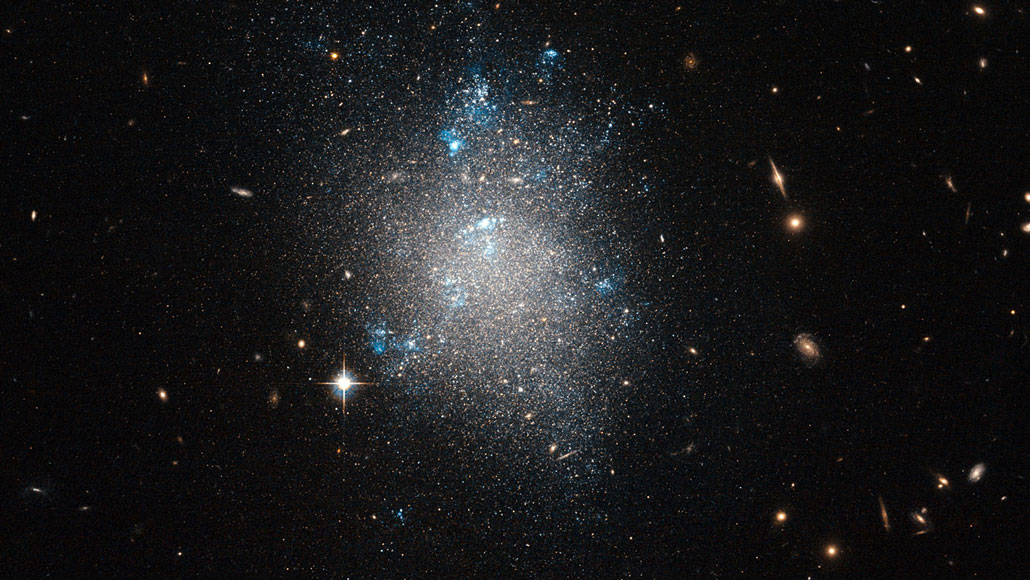
Most dwarf galaxies, like NGC 5477 seen in this image from the Hubble Space Telescope, have far more dark matter than normal everyday matter. But researchers recently found 19 dwarf galaxies that seem to be missing huge stores of dark matter.
Hubble/ESA and NASA